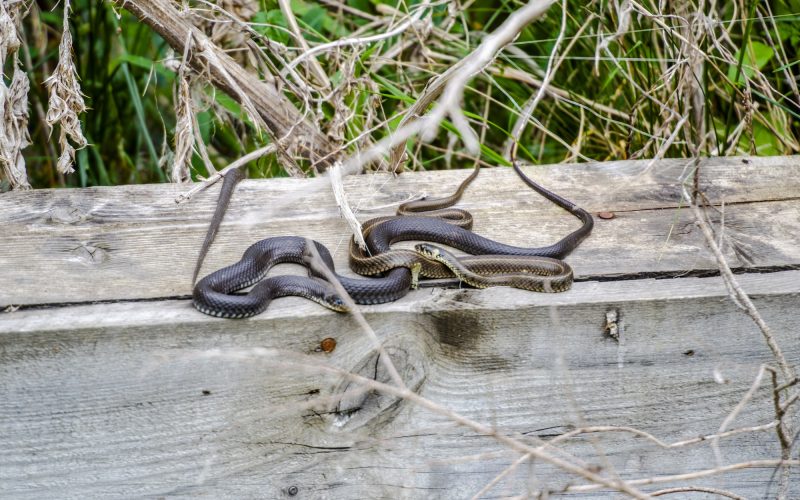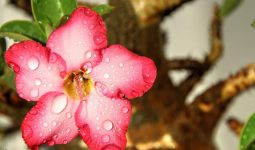It might be difficult to ensure your family and house are always safe if you live in a snake-prone area.
You’ll be happy to learn that there are certain plants that repel snakes if you don’t want to come into contact with these slimy critters.
Snakes may be found in various environments, although they are most often found in moist areas, marshlands, places with a lot of foliage, dry rock gardens, and deserts.
Although most backyard garter snakes are neither poisonous nor dangerous to people, it may be unsettling to have them around.
You want to relax outside and enjoy the warm weather without being concerned about snakes in your yard.
Snakes won’t go near your property if you cultivate a few plants that repel snakes or scatter them in your yard and house.
Remember never to attempt to handle a snake yourself, and call your neighborhood snake exterminator as soon as possible.
1. Clove Basil
The scent of cloves is among the scents that reptiles like snakes dislike most.
Like other basils, Clove basil has a strong scent, but it stands out for having a peculiar clove-like aroma that makes it one of the greatest plants that repel snakes.
This basil plant may be pruned into a hedge-like form and grow up to 6 feet tall.
It is historically cultivated for its essential oils because of its attractive purple and green foliage and strong scent.
This basil, commonly called African Blue basil, may be grown annually in any non-tropical region. It may grow invasive in subtropical or tropical climates. Therefore, people who live there should plant it with care.
Try another kind of basil if clove basil is not readily available; it will likely work just as well at keeping snakes away.
2. Indian Snakeroot
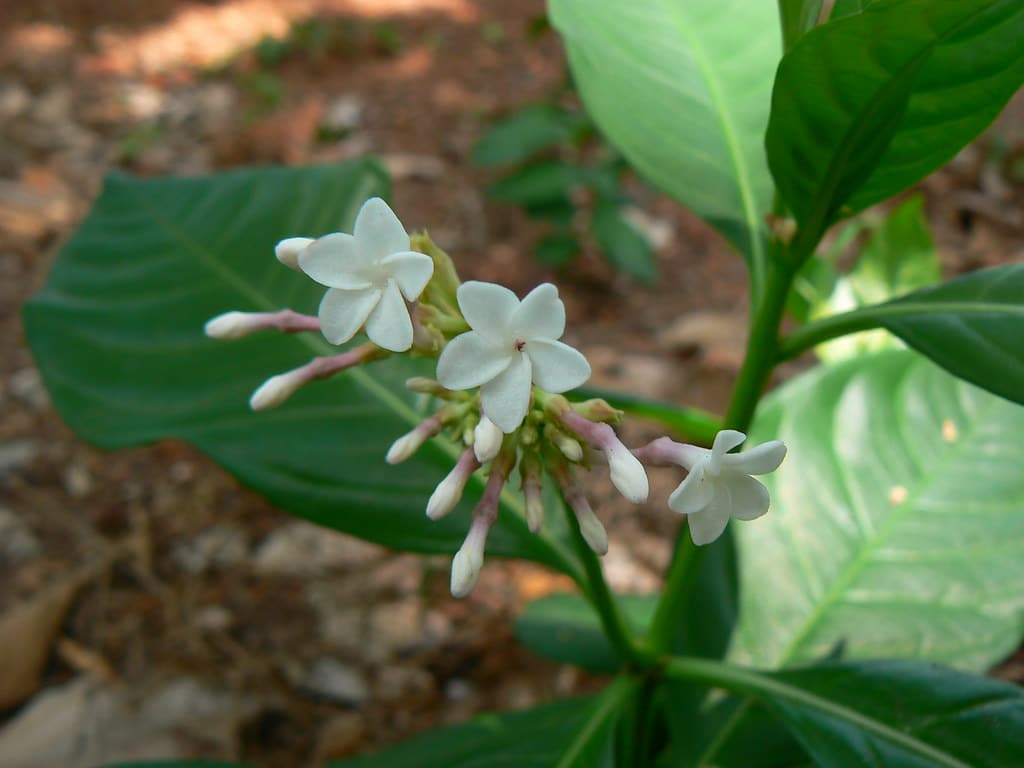
R. serpentina, often called Java devil pepper, Indian snakeroot, or serpentine wood, is among the plants that repel snakes and may ward against snake venom.
Its roots, bark, and leaves contain phytochemicals that are said to be able to treat a variety of disorders of the neurological system.
Most of its active ingredients are alkaloids. The plant’s extract is mostly utilized as a tranquilizer or antipsychotic due to its sedative and inhibitive properties.
Indian snakeroot, a member of the milkweed family (Apocynaceae), thrives in places with full sun to moderate shade.
Although it may reach a height of 1 meter (3.3 feet) as a shrub, many mature at only 30 to 50 cm (12 to 20 inches) in height.
It prefers humid environments in woods that get a lot of rain throughout the year. It may also grow as a weed in areas where crops are grown.
This plant could be a good choice for your garden if you live in a tropical or subtropical region.
Indian snakeroot has upright branches that grow from a yellow rootstock. The leaves are bright green and arranged in groups of three throughout the whole stalk.
It typically has white flowers from March through May. At the top of the plant, they appear in cymes. These become black drupes after being pollinated.
3. Kaffir Limes
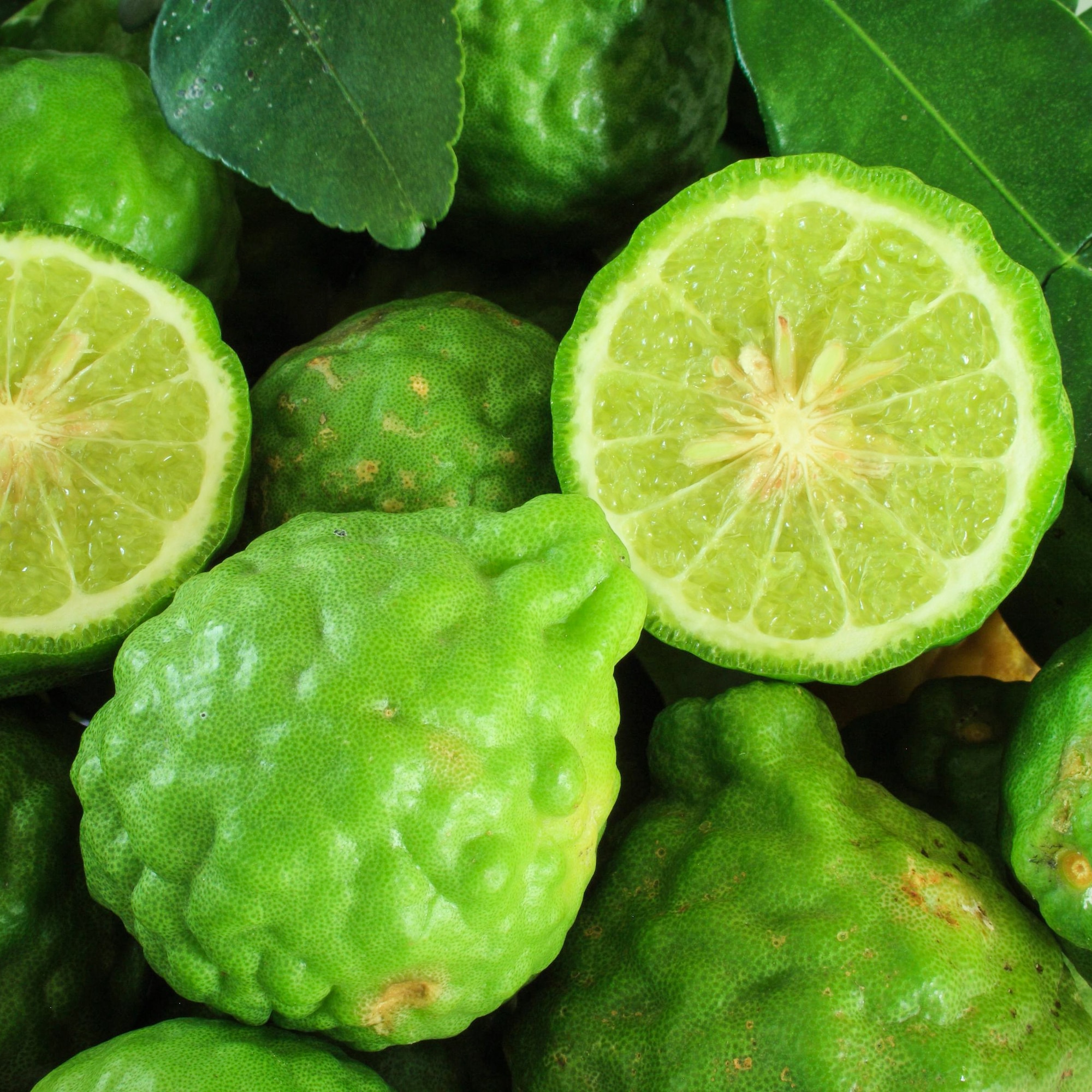
The rough fruits of this species are the most well-known; they have a peculiar odor comparable to that of certain other citrus plants.
Interestingly, compared to the fruits, the leaves are used more commonly as a food ingredient and a source of essential oils.
Additionally, crushing them releases a scent powerful enough to deter many pests, including snakes.
The kaffir lime shrub is shunned by many animals owing to its prickly stems and branches, in addition to deterring snakes with its scent.
Its glossy green and evergreen “double” leaves may conceal them. The leaves are the primary nutrition source for the Atlas moth’s caterpillars (Attacus atlas).
In tropical areas, the flowers may bloom most of the year. They have pinkish-white petals that are tinged with yellow anthers and are scented.
The height of a kaffir lime stem may reach 7.5 meters (25 ft). A fully grown shrub may span up to 3.6 meters (12 feet) in width.
It prefers warm regions with rich, well-draining soils, such as those in USDA hardiness zones 10 to 12.
It may be cultivated indoors and outdoors if it gets enough sunshine and enough ventilation.
You may spray the fluids from the fruits and leaves on pest-infested regions of your house or yard.
4. Mugwort

Despite being a weed, mugwort is a useful plant. Its leaves give a strong scent to flavor beer and keep snakes out of homes.
These plants increase and sag. Once they are in your garden, it could be challenging to manage them.
Easily grown perennial mugwort does well in USDA zones 3 through 9.
Its appealing greenish-silver leaves are ornamental, while its essential oils are bitter. The reddish-colored flowers on it attract butterflies.
Hardy mugwort loves full sun and may reach three to four feet. It tolerates almost any soil type.
Wormwood (Artemisia absinthium), a cousin of this plant, prefers similar environments and has lacy, silver leaves with yellow flowers.
Both substances have volatile oils that snakes find repulsive. Growing in a sunny, draining location is simple and fast, making it ideal for enclosing your deck or porch to keep these pesky pests far away.
Although the plant’s parts have been used to make the alcoholic beverage Absinthe, it is more well recognized for its value in healing numerous stomach issues.
This is one of the best plants that repel snakes because of its powerful scent.
5. Marigold

Marigolds are among a broad group of flowering plants that repel snakes that are significant culturally to many ethnic groups across their native habitat.
They are often grown as annuals, particularly in regions with mild climates.
A network of fibrous roots anchors these plants, and may grow in practically any substrate. Some widely used cultivars can withstand both heavy rains and short droughts.
Marigolds are often grown as plants that repel snakes because their roots generate thiophenes, which are known to be effective.
These give out a smell that might repel even the tiniest of snakes. Some types also have leaves that smell musky.
Herbs with weaker roots and leaves may therefore be planted next to marigolds.
Remember that snakes often dig into the earth to defend themselves and can harm the roots of delicate plants if they are not given enough protection.
Marigolds are, of course, wonderful garden plants because of their colorful qualities, in addition to their capacity to deter many problematic pests.
The numerously petalled flowers are strikingly colorful and captivating.
They draw a lot of pollinators and can withstand typical herbivores’ grazing pressure.
Try planting marigold seeds when the last frost has passed if your garden needs some spring and summer color.
6. Garlic

Garlic is a common seasoning well-known for its strong scent and the distinctive taste it adds to foods worldwide.
It is mostly grown for its bulbs, which have significant sulfuric chemical contents.
These create a strong stench from the bulbs whenever their surface is scraped or brushed.
Numerous dangerous animals, including snakes, may be deterred by the smell.
Organic nematicides and pesticides often include garlic as an efficient component.
The only drawback to repelling snakes is that they may need to be crushed and used as a spray.
The unharmed bulbs may not be aromatic enough to deter pests as a complete plant.
Consider spreading a paste of crushed garlic cloves to exterior surfaces around the house and garden.
If the extracts are aromatic enough, you should see a decline in nearby pests.
7. King of Bitters

The king of bitters, also known as green chiretta or creat, is frequently used as a natural pest repellent across its native region.
This plant is grown in thick borders to deter snakes from places where kids play.
It is often seen growing in patches in damp, somewhat shady environments in the wild. It is a herbaceous plant that can tolerate many different kinds of habitats.
The distinctive feature of A. paniculata is its thin, dark-green stems, which are abundantly covered with glossy, lance-shaped leaves.
These appear in pairs along the stems, which under ideal circumstances, have a height of up to 43 inches (109 cm).
From September to December, panicles with tiny, pink flowers appear at the nodes of the stalks. These become seed capsules after being pollinated.
Interestingly, the king of bitters includes substances with anti-venom capabilities and is among plants that repel snakes.
It is utilized in alternative medicine as a traditional therapy for conditions including jaundice, the common cold, influenza, and cancer.
Experts, however, still have doubts about its effectiveness as a treatment.
8. Skunk Cabbage

Skunk cabbage is among the wetland plants that repel snakes and grazers from the garden.
The foul smell given out by its trampled leaves may even be offensive to people, leading them to assume that a real skunk is nearby.
This meadow cabbage consistently alarms snakes, which are very sensitive to natural odors. S. foetidus has very broad, big leaves.
They develop from stems that stay buried and a network of rhizomes that is present underground.
The unusual flowers, formed on a spadix, also release a terrible odor. A mottled spathe protects them from direct sunlight.
Thankfully, the smell is mainly unharmful, but it draws many flies. It is a defense mechanism against bigger grazers that may eat the leaves.
The roots of skunk cabbage are very specialized in that they may contract and draw the plant deeper into the earth.
As a result, this species seems to be growing downward rather than upward.
You should grow this plant carefully since fully-grown plants may be difficult to dig up and remove from the garden.
9. Society Garlic
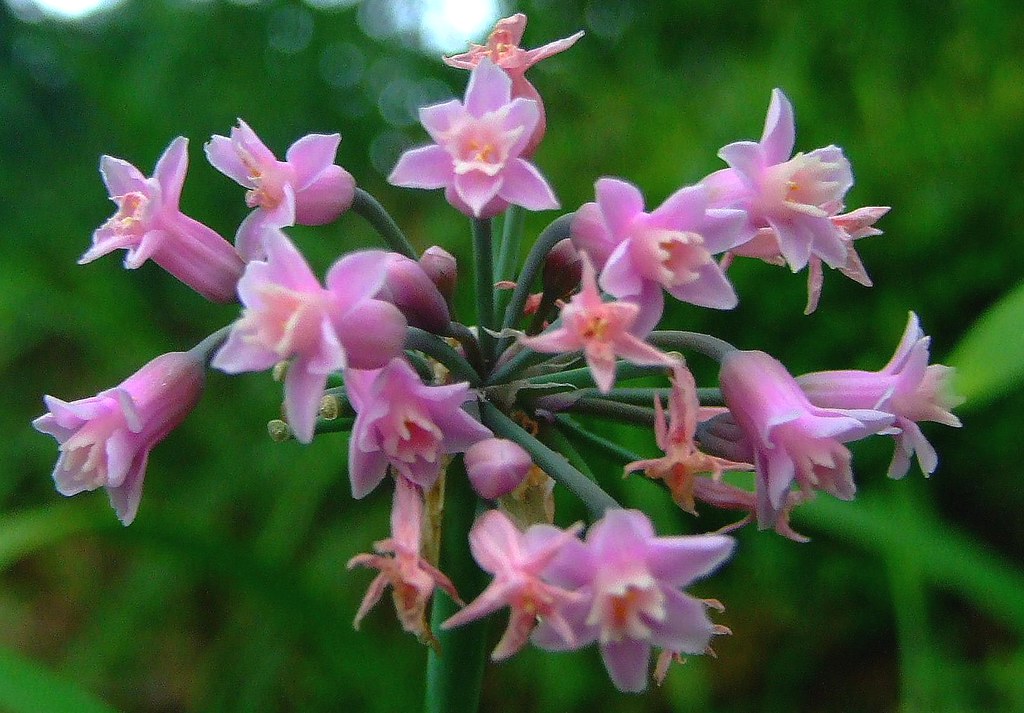
This flowering perennial, which won the RHS Award of Garden Merit, is also known as wild garlic, pink agapanthus, spring bulbs, or society garlic.
It is distinguished by its delicate leaves and substantial inflorescences, which bloom in the middle of the summer.
Since it smells similar to garlic, some people find the lilac-colored blossoms’ scent attractive, while certain pests find it repulsive.
Society garlic’s pungent scent should deter snakes from entering your yard. Healthy plant leaves may be crushed to ward against fleas and insects.
The plant must be placed in clusters because there must be enough to provide a distinctive scent.
Chives may be replaced with the delicate leaves of social garlic.
The plant is very resistant to various diseases because of its antifungal characteristics. It does well in soils that drain well and are somewhat rich.
It can survive mild winter frosts and droughts because of its relative hardiness.
10. Mother-In-Law’s Tongue / Snake Plant

Snakes are scared off by seeing this plant’s long, twisted leaves resembling swords, often known as sansevieria or “snake plant“.
These hardy, perennial plants will flourish outside in warm weather, whether because they see the sight as frightening or because of the sharp leaf edges.
They do best at temperatures between 70°F (21°C) and above but will endure temperatures as low as 55°F (12.5°C) if necessary.
This makes USDA zones 10–12 ideal for growing these plants. Place it in a bright area, but keep it out of the direct sun since it might burn the leaves.
Although they are not too picky with the soil, they do not like to sit in soggy, moist soils, which causes root rot.
The mother-in-law’s tongue has long, prickly leaves that are evergreen.
Humans find it amazing, but snakes find them terrifying. Plants that repel snakes may also do so just by sight.
It’s a beautiful plant to have around, whether indoors or outside. In comparison to other plants that repel snakes, it requires less upkeep.
The quick oxygen production by this plant is another benefit of having it on your property.
Additionally, it takes pollutants and poisons from the air and converts carbon dioxide into oxygen at night.
11. Golden Barrel Cactus
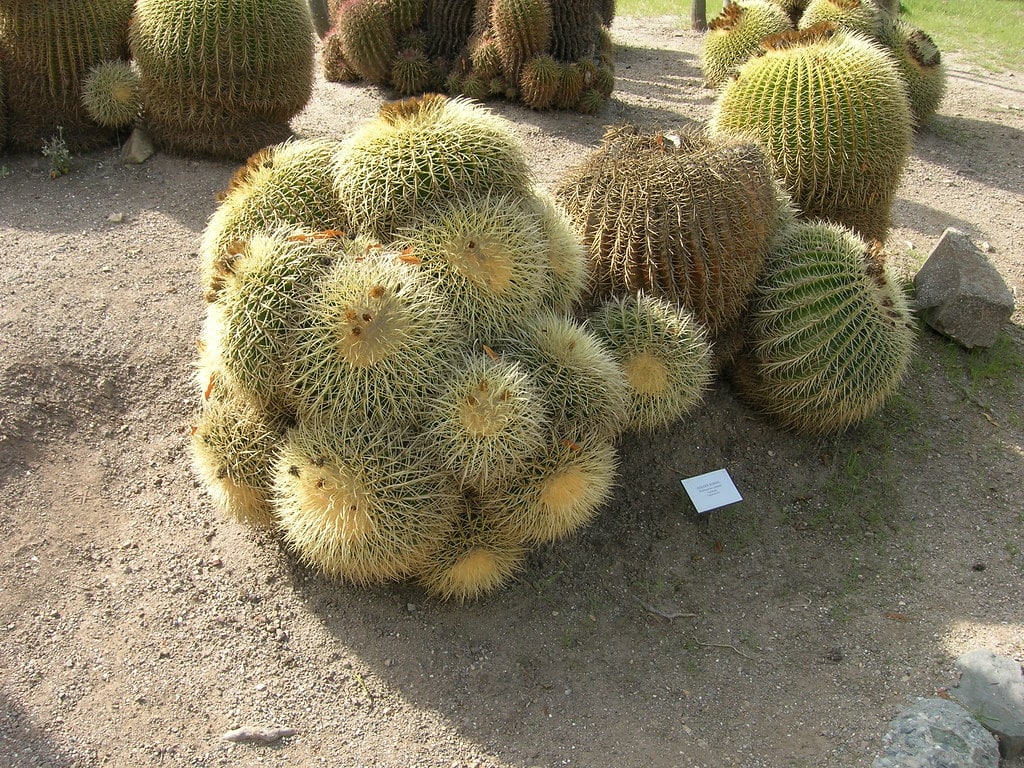
Most cacti are good plants that repel snakes because of their spikes, particularly in rock gardens. They tolerate dryness and like a lot of sun.
Since snakes are low to the ground, a low-growing kind of round barrel cactus, such as Echinocactus grusonii, will repel snakes from settling in your yard.
The pincushion-shaped plant has many venomous spikes covering it and may expand to a diameter of up to three feet.
People not residing in hot, arid areas must bring their cacti inside during the winter. These are difficult to transplant, in contrast to snake plants.
If you want to bring it inside when the weather gets cold, place it in a pot filled with well-draining soil, and then bury the pot so the cactus’ snake-repelling spines are level with the earth. For proper drainage, maintain a lot of rocks in the planting hole.
12. West Indian Lemongrass
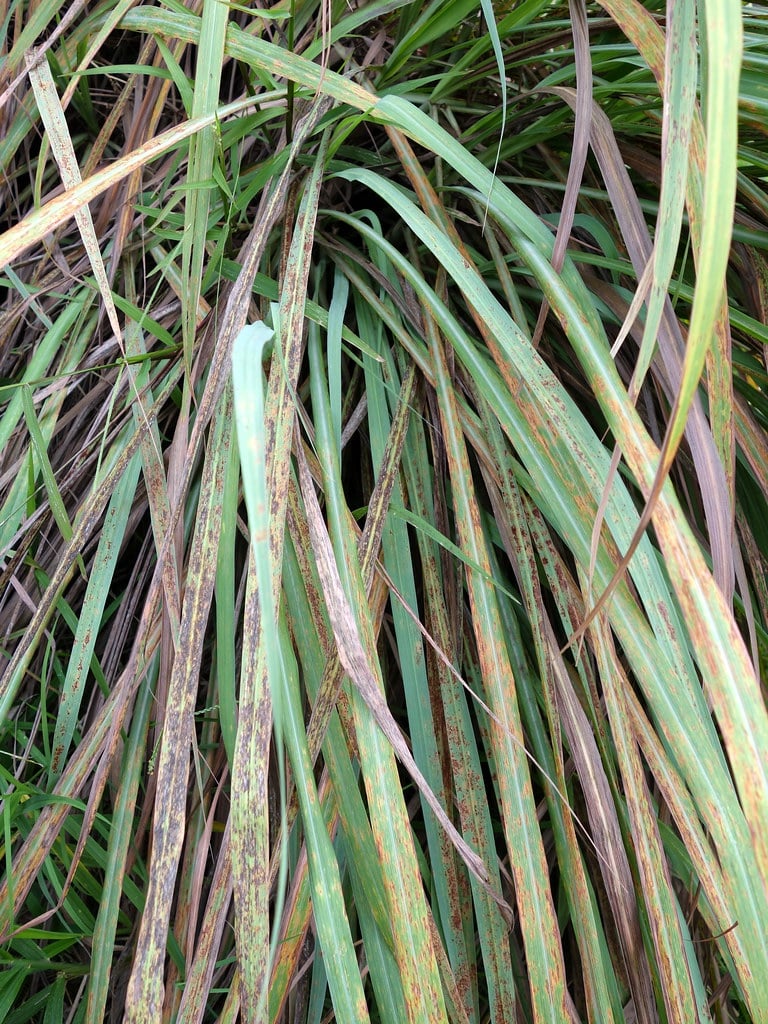
West Indian lemongrass is a tropical plant widely used to flavor food across its native region. Its scent is citrus-like.
Although it attracts bees and people, many pests (such as snakes and mosquitoes) stay away due to the scent.
Citral, one of several phytochemicals, is the key catalyst in its production. The essential oil is said to have antioxidant and blood pressure-lowering effects.
Rhizomes allow the hardy perennial lemongrass to spread vegetatively. It may also be cultivated from seed.
The plant’s culms, which may reach a height of 2 meters (6.5 feet), develop leaf sheaths that give it a highly textured look.
The tall, bluish-green leaves have enough light to elegantly arch.
This low-maintenance plant grows most well in warm, humid environments, such as next to water features.
It has spread across the globe, including the subtropical areas of several Western countries.
Mature plants should be planted in regions where animals are most likely to hide and burrow to act as an efficient snake deterrent.
It is also possible to sprinkle clipped bundles over the garden to disperse their scent.
13. Yucca
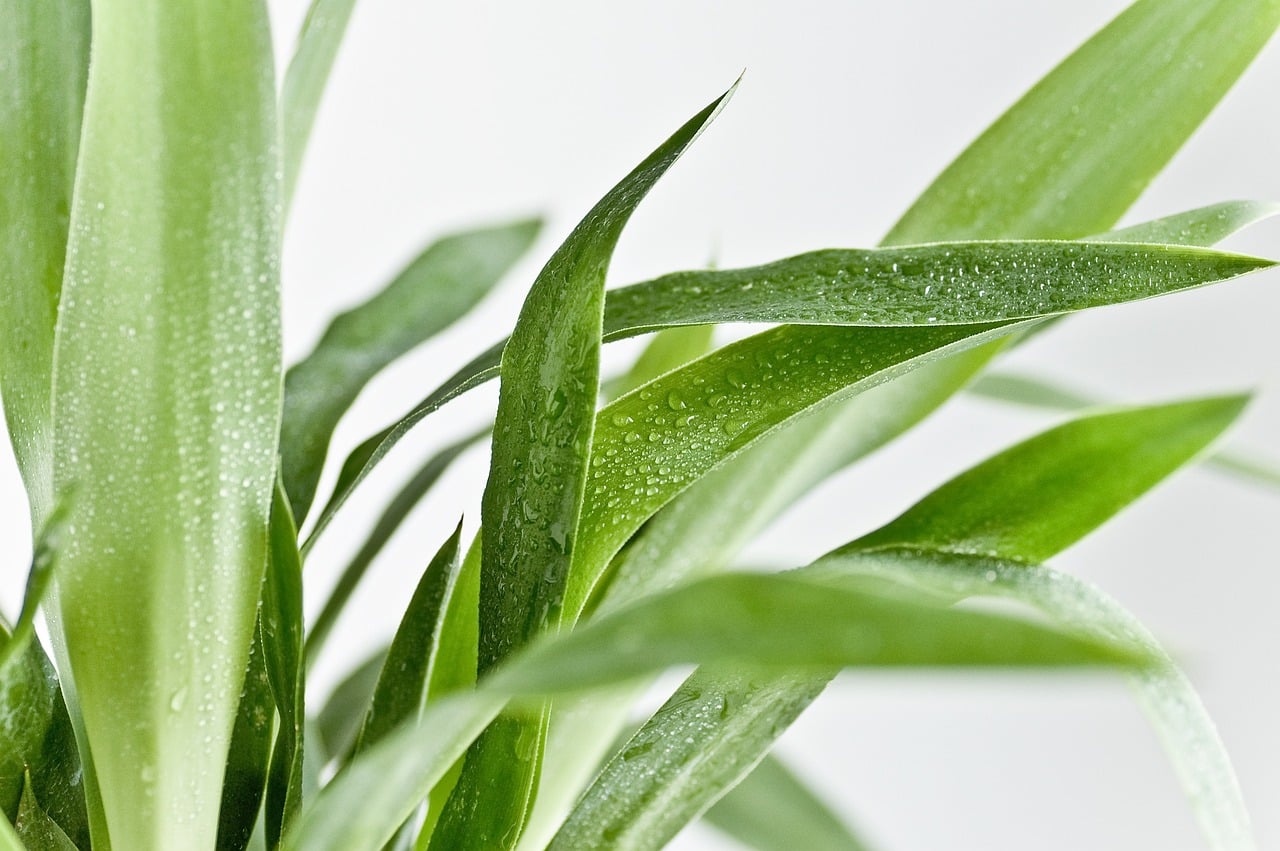
Another plant with pointed, spiky leaves is the yucca. It will deter snakes merely by sight, like the mother-in-law’s tongue.
Give mature yuccas as much space as possible on your property since they need many areas to thrive.
Never let it touch the sidewalk if you grow it inside your house.
Avoid placing it next to any garden or yard walks as well. All the spiky leaves may wound anyone passing by.
Warmer conditions also benefit this plant’s maintenance, allowing its white flowers to flourish in direct sunlight.
14. Onion
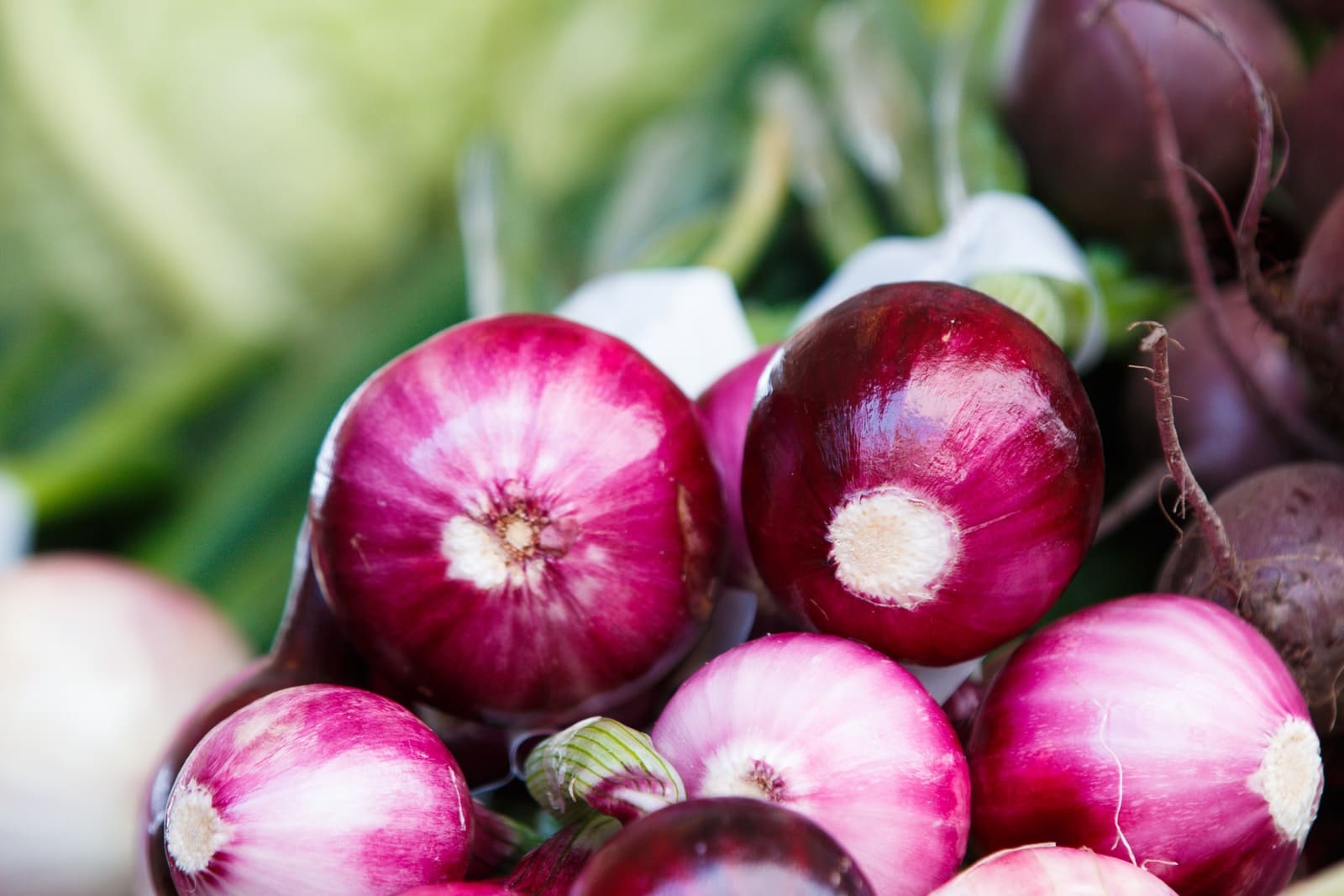
The modest onion is a crop with a long shelf life and is another incredibly well-liked bulb significant in cuisine worldwide.
They generate a lot of volatile phytochemicals released when the bulb’s skin is broken, which is known for causing many home chefs to cry a little.
Some of them have strong scents that make them plants that repel snakes in a similar manner to how garlic bulbs do.
If snakes and unruly grazers are a problem in your garden, you can choose to grow a few stands of onions to safeguard your more delicate plants.
Onions have a pungent fragrance that repels snakes, and their presence is readily deterred.
Plus, you’ll have bulbs you can harvest and keep in your kitchen. Keep in mind that onions grow best in fertilized soil and direct sunshine.
Onions can be cultivated outside all year round since they can withstand chilly temperatures.
They will benefit from weekly watering throughout the spring when growth is optimum.
They need to get enough water to encourage root growth. Thrips should be avoided since they may gather on the leaves.




